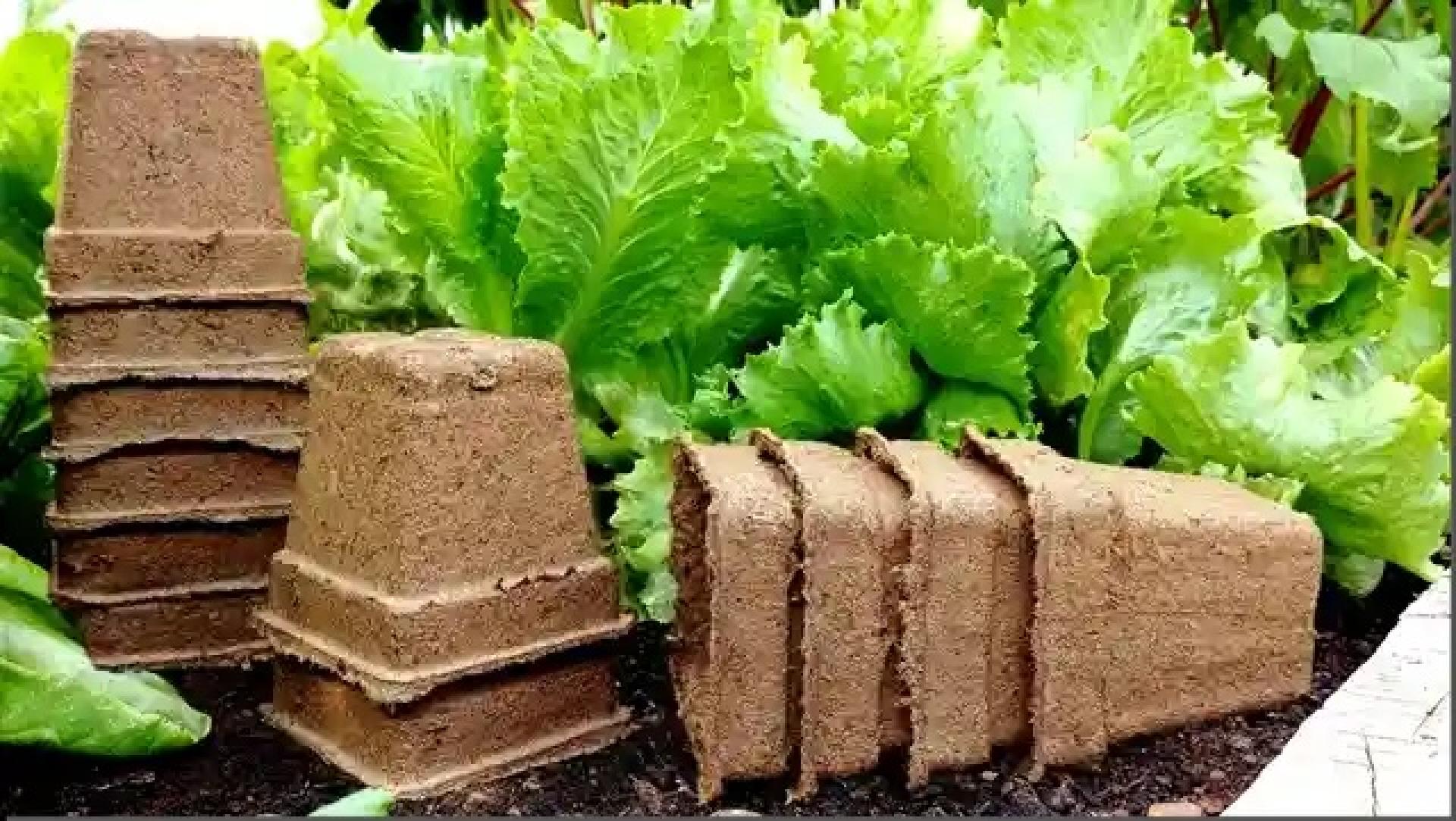You are here
Be A Better Gardener: Freund Dairy Farm and its “Cow Pots”
Be A Better Gardener: Freund Dairy Farm and its “Cow Pots”
By Thomas Christopher
My recent conversation with Amanda Freund, part of the third generation to operate the Freund dairy farm in East Canaan, Connecticut, was a trip down memory lane. I spent large parts of my boyhood summers hanging around a neighboring dairy farm, playing with the farmer’s children after the day’s chores were done and pitching in on tasks such as haying and bringing in the herd for milking. I so admired, I told Amanda, the ingenuity of the farmer, Charlie Murphy, who seemed able to fix any implement in his sheds. Amanda then got to the point, discussing how her ingenious father, Matt Freund, has turned one of the Freund farm’s biggest liabilities, the 3,600 gallons of manure its herd of 300 Holsteins produce daily, into an environmental asset.
This transformation began as long ago as 1997 when Matt Freund installed a “digester” to process the manure that the herd produces while confined to the barn in wintertime. The manure is pumped into the digester, a 64,000-gallon concrete vessel, and kept at 100°-103° F., the same temperature as a cow’s stomach, allowing microorganisms originating in the cow’s digestive tract to continue breaking down the manure. A major byproduct of this process is methane gas, which if released into the atmosphere functions as a very potent greenhouse gas and is a major contributor to global warming. The methane released in the digester, however, is captured and burned to heat the digester, their milking parlor, farmhouse, and offices.
The recycling doesn’t stop there. The liquid portion of the manure, 85% of the whole, is squeezed out of the digested manure with a screw press and stored in an 800,000-gallon pond for use as a fertilizer that nourishes the crops that the Freunds grow on the farm’s 500 acres to feed the dairy herd. The fibrous solids left in the press are used as material for the product that interests a gardener like me the most, the Freunds’ unique plant-growing containers, “CowPots.”
These pots are made by molding and drying a slurry of the solids on more than a dozen different kinds of forms. There are round and square pots in a range of sizes from small to large, and various cell packs similar in shape to the plastic ones used to raise and sell flower and vegetable seedlings at garden centers. Superficially, the finished CowPots look similar to the peat pots that many gardeners use to raise seedlings at home, but there are crucial differences.
The advantage of growing seedlings in a decomposable pot such as peat and CowPots is that at planting time, the seedlings can be planted into the soil by removing them from their pots and disturbing their roots. Peat pots, however, in my experience, may take months to decompose and can hamper the spread of the plant roots. Unlike peat pots, however, which are nutrient-free, the CowPots contain about 1% nitrogen, a nutrient that jump-starts decomposition once the pots are buried in the soil so that they decay more quickly.
Peat pots also come at a considerable environmental cost. Peat bogs are formed by the anaerobic decay of the mosses or sedges that grow on them, and they accumulate very slowly, at an average rate of about 1/25th inch per year. This means that harvesting the peat from them is essentially a type of strip mining that destroys the bog. Besides peat bogs’ importance as a haven for rare species of plants and birds, they are also invaluable in the way that they extract carbon dioxide, the principal greenhouse gas, from the atmosphere and store it almost indefinitely in their peat. Climate activists have promoted planting trees as a way to reduce atmospheric carbon dioxide and combat global warming. But the fact is that worldwide, peat bogs sequester more carbon than all of the forests and other types of vegetation too. Switching your growing to CowPots is an effortless way to reduce your carbon footprint while helping your plants grow better.
To listen to my conversation with Amanda Freund, log onto the “Growing Greener” podcast via the Berkshire Botanical Garden website at www.berkshirebotanical.org.
Be-a-Better-Gardener is a community service of Berkshire Botanical Garden, located in Stockbridge, Mass. Its mission, to provide knowledge of gardening and the environment through a diverse range of classes and programs, informs and inspires thousands of students and visitors each year. Thomas Christopher is a volunteer at Berkshire Botanical Garden and is the author or co-author of more than a dozen books, including Nature into Art and The Gardens of Wave Hill (Timber Press, 2019). He is the 2021 Garden Club of America's National Medalist for Literature, a distinction reserved to recognize those who have left a profound and lasting impact on issues that are most important to the GCA. Christopher’s companion broadcast to this column, Growing Greener, streams on WESUFM.org, Pacifica Radio and NPR and is available at berkshirebotanical.org/growinggreener.
Help Our Garden Grow!
Your donation helps us to educate and inspire visitors of all ages on the art and science of gardening and the preservation of our environment.
All Donations are 100 percent tax deductible.


